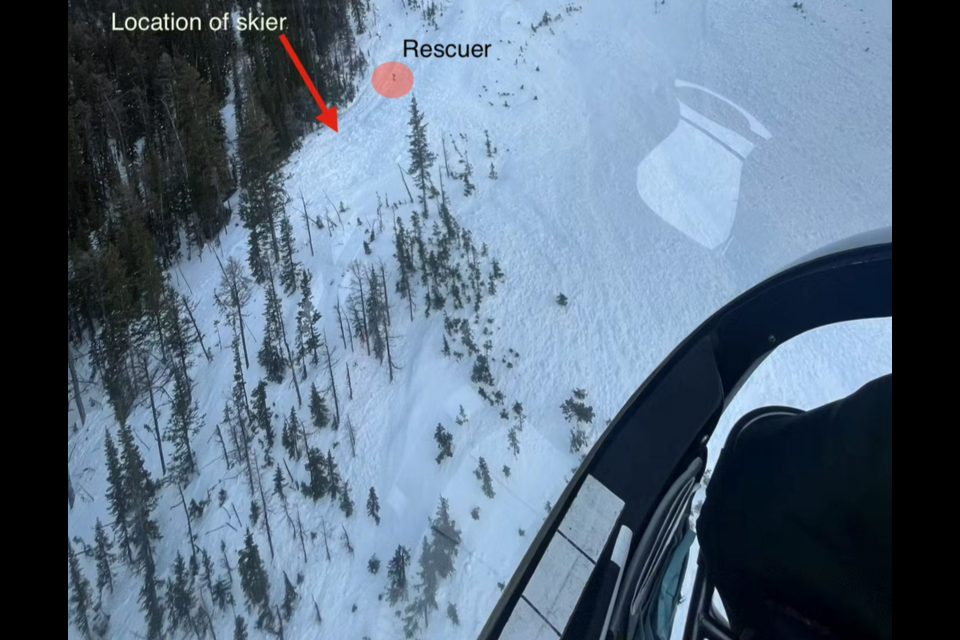FIELD, B.C – A lone skier was swept away in an avalanche on Cathedral Mountain in Yoho National Park last week, but his body was not recovered until several days later when he reported missing.
According to a post on Avalanche Canada’s Mountain Information Network (MIN), the individual skied off the shoulder of Cathedral Mountain onto a slope known as Cathedral Glades when the size 2.5 avalanche was triggered on Friday (March 29).
Parks Canada officials say the victim, a man in his 40s, was found partially buried at about 7:15 p.m. on Monday (April 1) after being reported missing, and was eventually located by rescuers from a helicopter when they spotted a ski.
Once landed, the rescuers found the victim was partially buried, with a boot also visible on the snow surface.
“A transceiver was found in the individual’s bag, but it was turned off, which delayed search efforts,” said Annie MacNeil, acting public relations and communications officer for Lake Louise, Yoho and Kootenay field unit.
“Parks Canada would like to express our sincere condolences to the family and friends of this individual.”
While the MIN site indicates the avalanche likely happened on March 29, Parks Canada said it is not 100 per cent known when the avalanche occurred, although the individual was known to have been skiing in the Lake Louise area since Thursday (March 28).
According to Parks Canada, the missing person’s vehicle was located at the Lake O’Hara parking lot.
“With limited information of the skier’s trip plans, the search was extensive within the Lake O’Hara area,” said MacNeil.
“All ski tracks, as well as high-risk areas were investigated.”
According to the MIN report, the size 2.5 avalanche happened on the north face of Cathedral Mountain at about 2,000-metre elevation.
“The skier triggered a size 2.5 avalanche, which appears to have failed on or stepped down to the Feb. 3 persistent weak layer,” states the post.
“The victim was not reported missing until late in the day on April 1.”
Currently, avalanche conditions are rated considerable in the alpine for much of the region.
MacNeil said Parks Canada would like to remind backcountry enthusiasts to be responsible for their own safety and carry avalanche safety gear – a transceiver, probe, and shovel – and know how to use them while in avalanche terrain.
“When planning your backcountry trips, it is important to ensure a friend or family member knows of your travel plans, including the location of the trail head where you will be starting your trip, your pre-determined return time so your contact knows when to expect you, and the make and model of your vehicle,” she said.
“This information will assist rescuers if you are reported overdue. It is also safer to travel with a friend or group than travelling alone.”
Anyone choosing to recreate in the backcountry of the national parks should visit www.avalanche.ca to check the Parks Canada avalanche bulletins before heading out.
There have been two other fatal accidents in this region so far this winter, both in Kananaskis Country.
A size 2 slide fully buried and killed one ice climber, and partially buried another, on Nov. 11, 2023, in the Ranger Creek area in Peter Lougheed Provincial Park.
The second fatality occurred March 10 on Tower Peak, during a special avalanche warning for all of western Canada. The size 3 avalanche swept two skiers between 150-250 metres down slope, fully burying the person who was killed and burying the other up to the top of his head.
Despite the partially buried person being able to dig himself out and locate his friend via transceiver, the fully buried skier did not survive.




